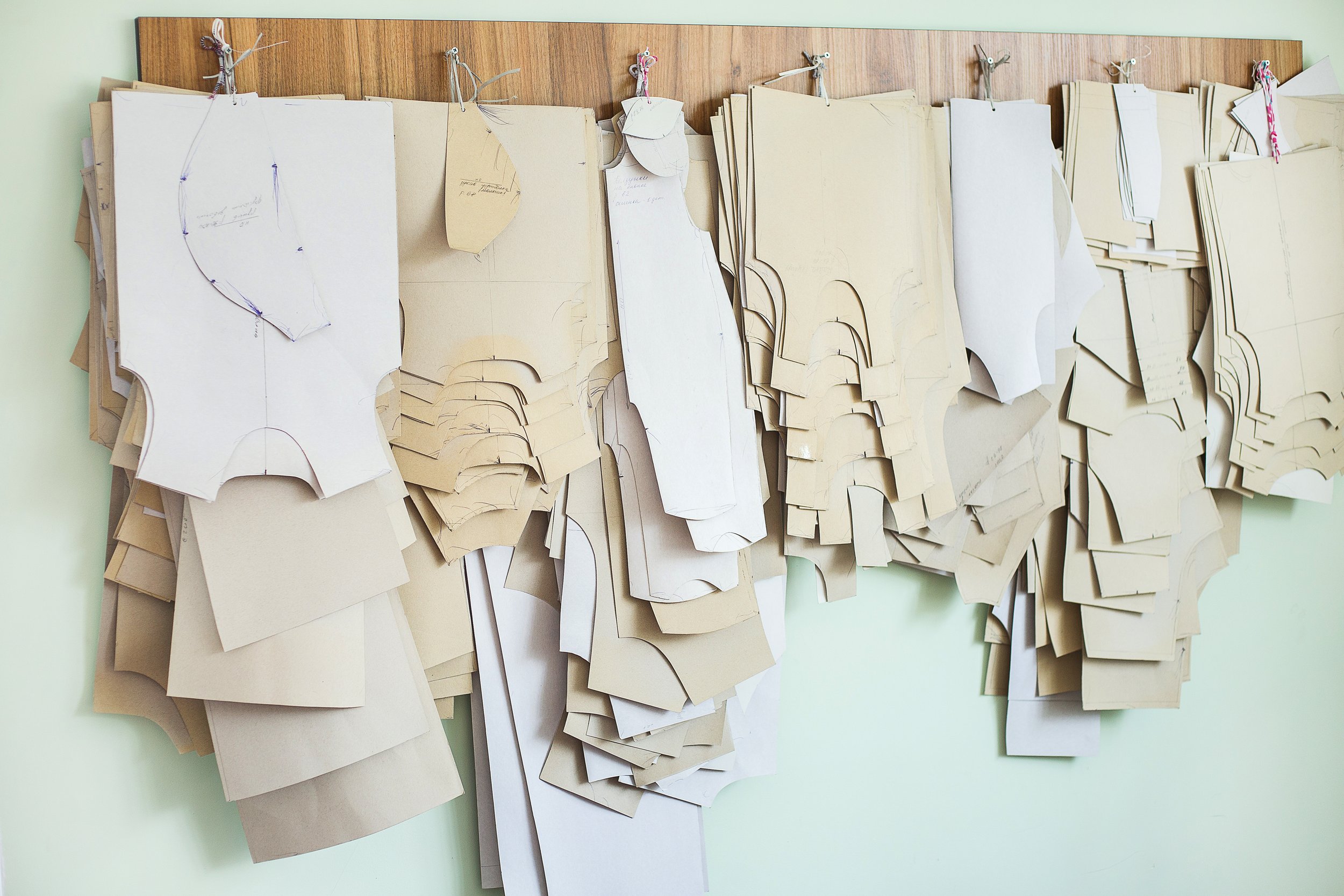5 Things Your Pattern Grader can do to Improve Your Workflow and Ensure Accuracy
Getting your patterns graded is a crucial step to launching your garment into the world where it is available in different sizes. There are certain things that professional graders can do that will make things go much smoother for accuracy purposes and workflow.
Here are 5 things that graders should be able to do for you FREE OF CHARGE:
1) Make facing pieces.
If you draw the shape of your facings on the pattern pieces we can easily “pull it off” after grading your main pattern. What this means is that this facing line is treated as part of the grading process on the main body pieces. Once the grading is checked for accuracy then I go back in and duplicate just this facing shape so it matches exactly to the body and the same grading carries over.
I find that facings are the most likely pieces to not match to the seams they are intended to sew to when I get them as pre made pieces. Personally, I find it preferable to make them myself so I can ensure that they match the body shape exactly.
However, I do have to put in a bit of disclaimer here. If you want something really crazy and specialized then either you make it yourself or it may have to be considered part of billable hours if you are requesting it to be done.
2) Stack pieces differently
If you are making home sewing patterns sometimes you will find that lines just overlap too much or get really crazy in some areas where it’s just confusing. When we grade a pattern there is always a point that the grade is based out from. This is the stack point. Once the pattern is graded it’s easy to reconfigure how the pieces look for each size by changing the stack point.
3) Provide finished garment measurements
When you are working with a professional level CAD system for pattern grading, it factors in your need for measurements. We can easily output your sizing information into a spreadsheet. For instance, you should know what the chest circumference is so that you can do quality control checks. This is easily generated. If you have a tech pack set up then you will need to include these measurements as part of the quality assurance package.
If you are making home sewing patterns, then you will need these finished garment measurements so you customers can review the size to select.
My only caveat is not to go crazy. Yeah, it’s fairly easy to do, but it does take a little bit of time. I have no problem doing the basics, but if you present me with 30 points of measure that you need and only half of which I think are usable, you may be charged for this. I would say a good average to expect for free could be 5-10 points of measure.
4) Ensure everything is symmetrical
When working in a pattern drafting CAD system, we only really work on half the garment. Most softwares have the functionality to create a mirror image of the piece based on a center line. What is applied to one side is automatically mirrored to the opposite side.
If you are having your pattern digitized, then it’s highly recommended that you just do half the piece and include a note if you want only the half back as output or the full piece.
5) Customize notch styles
This is more for the home sewing pattern development, but if it rings true for your RTW brand then keep in in mind! We can change notches to be basically whatever style you want: traditional I notches, V notches, cut out V notches, T notches, U notches, etc. Just let us know what you would like. We can also modify the appearance of any of the above based on length and width increments.
So what do you think, do these things help out your workflow? Don’t be shy about asking your grader to help you out with these type of things.

